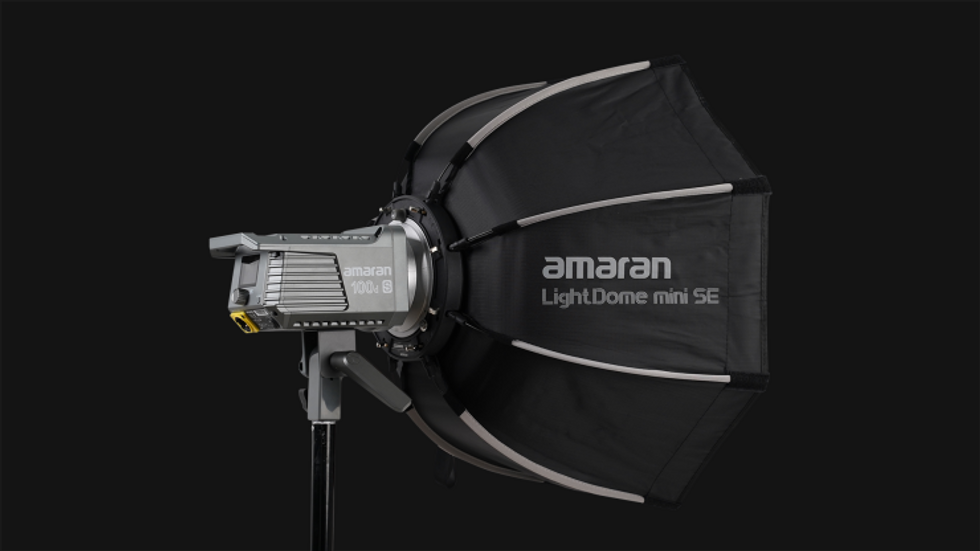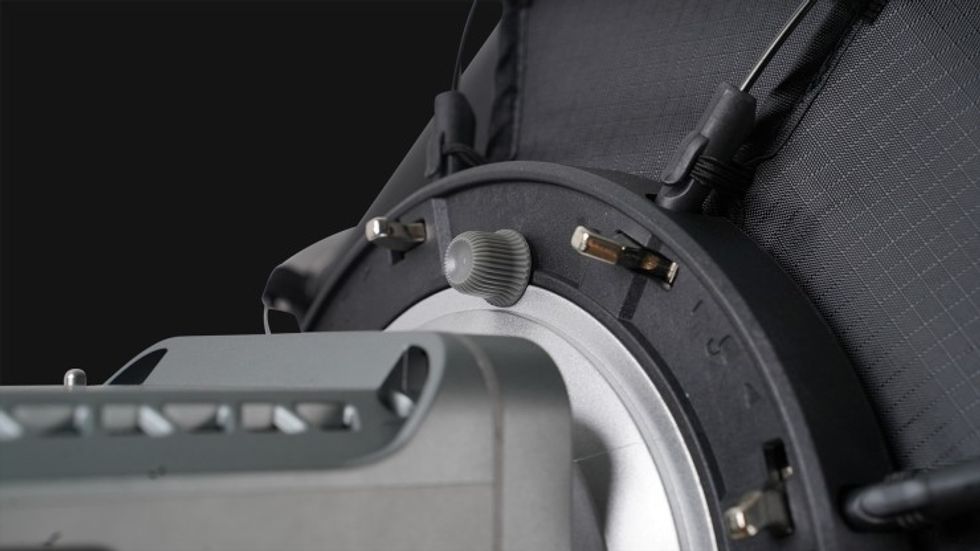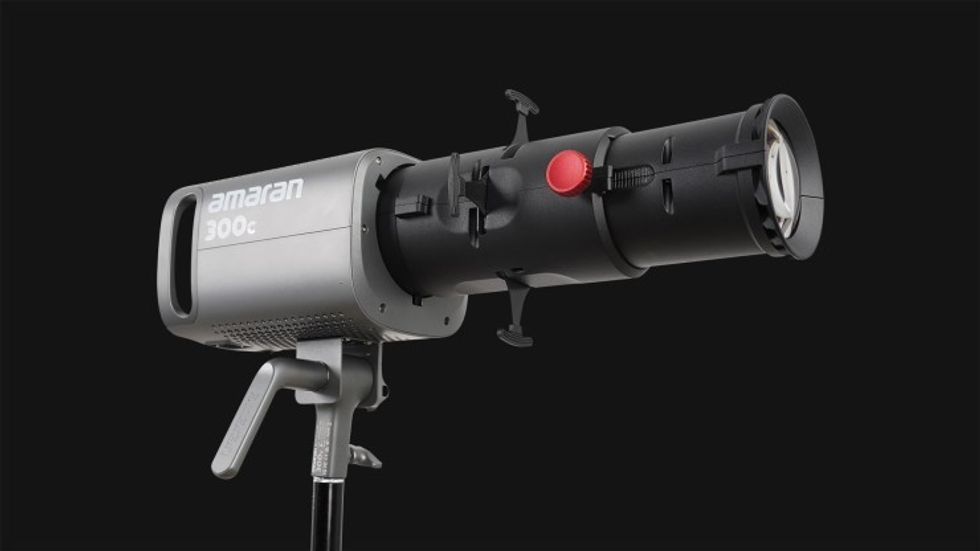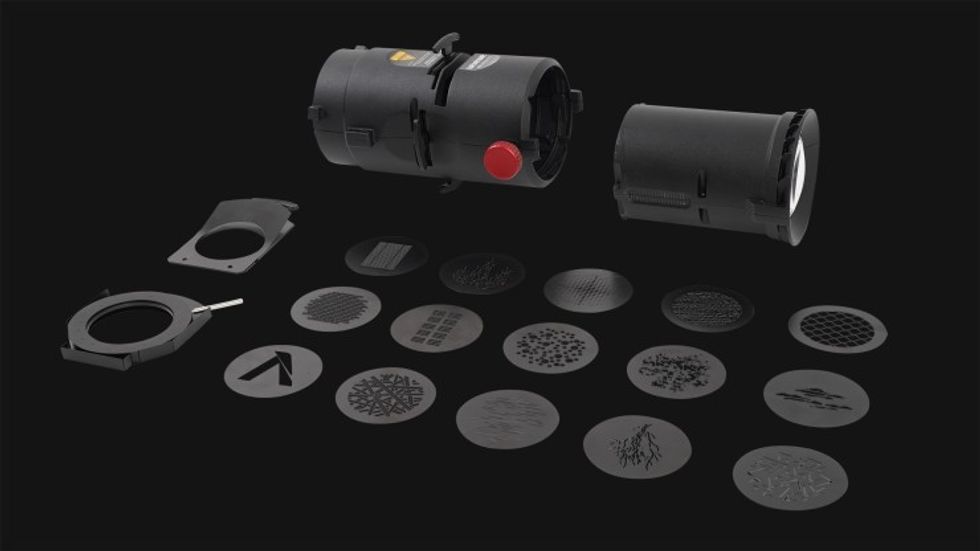Aputure Supports amaran Lights With Two New Bowens Accessories
With new amaran lights come new light modifiers.

With the release of the new amaran 300c and 150c from Aputure, budget creatives will be in need of new modifiers to get these lights working as intended.
This is why Aputure has announced new Bowens accessories for its expanded amaran line. The two new accessories include the Light Dome Mini SE Octabox soft light modifier and the Spotlight SD projection lens modifier. Both accessories are designed to increase the performance of the amaran 150c or 300c point source lights but can also work on any Bowens’ mounted light fixture.
The amaran Light Dome Mini SE
With an eight-sided deep parabolic design, the Light Dome Mini SE is amaran’s first Bowen mount soft light modifier. It features a highly reflective silver inner lining and a quick-release support rod system that can transform point source lighting figures into efficient and directional soft light sources.

The Light Dome Mini SE is incredibly light at 1.61 pounds (.72kg) and can be quickly deployed and torn down thanks to the quick-release design. The eight support rods snap easily into place and can be torn down by undoing the quick-release latches located near the Bowen mount speed ring, which can be collapsed two at a time using a pinching motion.

The Light Dome Mini SE measures 22.8x13.4x8.5 inches, similar to the Aputure Light Dome Mini II. With a compact design, the Light Dome Mini can be used effectively in confined spaces, and thanks to its lightweight girth, heavy-duty stands are not needed. The Light Dome Mini SE can be used with lights that output up to 300 watts, including the amaran 300c, Aputure LS C300d II, and the Aputure LS 300x.
The amaran Spotlight SE
The amaran Spotlight SE is another first in the amaran line and is designed to provide light source modification specifically for the amaran 150c and 300c point source LED lights. With a Bowens’ mount attachment, built-in shutters, and slip-in M-size Gobos output disks, the Spotlight SE can shape the output of the lights with different lens options and precision control.

The M-sized Gobos enable gaffers to project a variety of patterns, and the built-in shutters allow for the shaping of crisp and focused beams or a defocused software image. The Spotlight SE also has a choice of 19° and 36° lenses for versatility to adapt to either a close-up or wider shot, and an 18-leaf Iris can be added for even more control. Users can also buy each lens piecemeal.

The Spotlight SE measures about 12 inches (31 cm) and weighs 3.4 pounds (1.5kg) when using the optional iris attachment. When attached, the Spotlight can output a luminance of up to 22,330 lux at 19° and one meter or 26,540 Lux at 36° and one meter.
Pricing and availability
The amaran Light Dome Mini SE is available for preorder at a retail price of $69, and includes a lightweight drawstring carrying bag for the dome and all its accessories. Meanwhile, the amaran Spotlight SE is available at a preorder price of $335, while the 19° and 36° lenses can be purchased separately for $159 and $149, respectively. The Spotlight SE also includes an EPP carrying case similar to those that come with the 150c and 300c point source lights, but a fabric carrying bag will be made available soon.
No Film School's complete coverage of NAB 2023 is brought to you by Blackmagic Design and Lexar.
Source: Aputure












